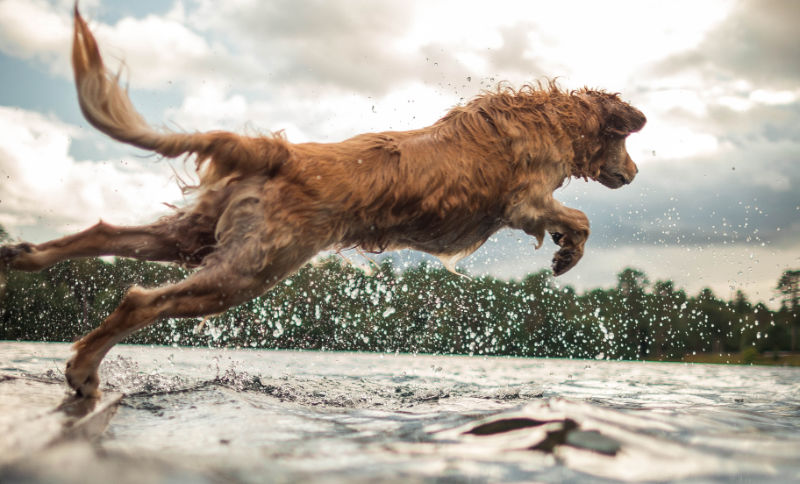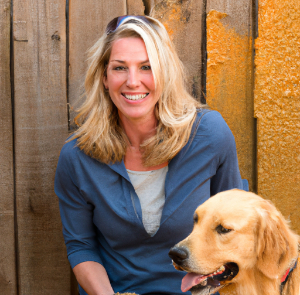
Training a hunting dog is about establishing a strong bond between the hunter and the animal. It's not just about buying the most expensive or prestigious breed, but rather finding a dog that is compatible with the hunter and their family. While any type of dog can be trained to become a hunting dog, certain breeds have proven to be particularly skilled in the field. These breeds, including pointing dogs, retrieving dogs, Bracken, dachshunds, terriers, and retrieving dogs, have specific skills such as a strong sense of scent, agility, and the ability to navigate challenging terrain. However, the most important factor in choosing a hunting dog is still the personal connection between the hunter and the dog. With over 86 dog breeds that are suitable for hunting, it's important for hunters to listen to their intuition and choose a dog that fits their preferences and lifestyle.
Pointing dogs are known for their ability to perform a wide range of tasks both "before the shot" and "after the shot." They are considered to be all-around dogs, making them a popular choice for hunters who want a trusted companion to handle various tasks. These tasks include tracking down game animals, pushing or driving them before the shot, retrieving killed game, and tracking wounded game. Due to their versatility, pointing dogs are highly favored by hunters who have trained them well.
When it comes to pointing dogs, there are many breeds to choose from, and the selection often depends on factors such as appearance, size, and coat, as well as the hunter's personal preference. However, some breeds are particularly well-suited for pointing and are widely favored among hunters. These breeds typically have a shoulder height of 47 to 70 centimeters and include:
These breeds have unique characteristics that make them well-suited for pointing tasks. They are versatile, fast, and not afraid of water, making them useful in almost any terrain. They also have breed-typical dispositions that highlight their versatility. For example, German Longhairs are excellent for wound tracking and general tracking, while Munsterlanders and Poodle Pointers are skilled at retrieving and searching. The Hungarian Pointing Dog excels in field work and is a beloved family pet, while the French representatives are some of the most trained pointing dogs worldwide. English pointing dogs are known for their great stamina and are well-suited for long and large hunts.
Note: Pointing dogs listed above do not shy away from water, which makes them ideal for retrieving animals that have fallen into water. They are enthusiastic swimmers and will not hesitate to jump into the water to retrieve game. This water-loving trait gives these breeds an advantage over others.
Coursing dogs, also known as flushing dogs, are used for tracking and locating game animals during hunting. Unlike pointing dogs, flushing dogs do not point, but instead have been trained for general tracking. They have been used both before and after the actual hunting of the game, and can pick up tracks, search for wounded animals or those injured in a traffic accident, and locate game.
The flushing dogs work independently of the owner or hunter, allowing them to pick up scents and locate game. This means that the tracking sound, expressed through various sounds, is crucial for the hunter to locate the dog even if it's out of visual contact. To follow a track effectively, flushing dogs should not be too tall, with a shoulder height usually ranging from 38 to 52 centimeters.
Popular breeds of flushing dogs include the German Wachtelhunde, English Cocker Spaniel, and Springer Spaniel. These breeds are well-suited for tracking work as they have a keen sense of game, are not afraid of water, and have a strong bond with their owner. These dogs work alone with their hunter, and it is advisable to take only one hunting dog on a hunt to prevent confusion with other dogs' tracks and scents.
Types of Coursing Dogs:
These breeds are known for their:
Note: It is recommended to take a coursing dog alone on a hunt to avoid confusion with other hunting dogs' tracks and scents.
Coursing dogs are trained for general tracking of game animals. They are usually released to independently pick up a scent and locate game. The tracking sound is important for the hunter to locate the dog, even when it's out of sight. Coursing dogs have a shoulder height of 38-52 cm and are known for their ability to work well with their owner and never straying too far.
Bracken and Bloodhounds are similar in that they both have excellent sniffer noses. The name "Bracken" was the historical term for the sweat dogs, which were later called Bloodhounds. Bloodhounds are trained for tracking injured game, while stag dogs are used before the shooting of an animal. Bloodhounds have a remarkable sense of smell, which they carry out with calmness and serenity. They have an exceptional ability to track and an ambitious nature, making them an ideal choice for hunting.
Types of Bloodhound Breeds:
Note: Bloodhound breeds are selected based on their sense of smell, not their size. Their shoulder height can range from 30 cm to 65 cm, with anything above 65 cm being rare, as they need to keep their nose close to the ground.
These types of dogs have a special sense of smell that sets them apart from other breeds. It is important to consider the breeding and origin of a dog when selecting one for hunting, as not all dogs have the same sense organ.
Dachshunds, also known as the "dwarf Bracken," are small hunting dogs that are known for their excellent sense of smell. They have evolved from bloodhounds and Bracken and are now the only breed of dog suitable for burrow hunting.
Dachshunds are divided into three different coat types: short-haired, long-haired, and rough-haired. The rough-haired dachshund is the most popular variety among hunters and is the favorite of many.
These dogs are completely independent and free-ranging in their search for game. They are slow retrievers, but their loud barks are an advantage in pressing the game slowly, without causing it to flee in panic. Dachshunds are reliable trackers and are indispensable helpers in the field of burrow hunting, especially underground in the vast tunnel systems of burrows.
Types of Dog Breeds:
Terriers are modern hunting dogs that have evolved as all-rounders, similar to pointing dogs. They have replaced many other types of hunting dogs and are considered indispensable in certain hunting scenarios. However, due to their strong hunting instincts, terriers are not well-suited for family life and are almost exclusively found in hunting environments.
It's important to note that not all terrier breeds are suitable for hunting. It's crucial that a terrier can learn and follow commands, otherwise it can be dangerous in the field. The following are some of the most popular terrier breeds for hunting:
Retrieving dogs are known for their quiet hunting abilities and their role in bringing back shot game after a hunt. Unlike other hunting dogs, they do not have the capability to make a tracking sound.
Popular Retriever Breeds:
Characteristics of Retrieving Dogs:
Labrador Retrievers and Golden Retrievers are the most common retrievers, known for their ability to swim and retrieve game that has fallen into the water. They are true specialists in their field and enjoy being in water by nature.
Despite their lack of tracking sound, retrieving dogs are great family dogs and are loved by children for their strong will to retrieve anything their owners throw. They are a unique combination of hunting dogs and playful companions, making them a popular choice for hunters and pet owners alike.
